How painter Yolanda López gave the Virgin of Guadalupe a feminist tweak

- Share via
I missed the Oscars. (Did anything happen?) Thankfully, I was able to get all the Oscars fashion from University of Michigan public health professor Dr. William Lopez, who helpfully paired 2022 Oscar outfits with corresponding public health graphs. I’m Carolina A. Miranda, arts and urban design columnist for the Los Angeles Times, and I’ve not only got the latest art and design news, but I’m also up to date on vaccine hesitancy rates in the U.K.:
Bringing humanity to the Virgin
Yolanda López didn’t live to see her first solo museum exhibition. The artist, who was born and raised in San Diego and later relocated to the Bay Area, died in early September at the age of 79. Her solo show, “Yolanda López: Portrait of the Artist,” opened at the Museum of Contemporary Art San Diego six weeks later.
This is bittersweet. For “Portrait of the Artist,” which was organized by MCASD curator Jill Dawsey, is a stirring tribute to the artist’s matrilineal lineage, an astute deconstruction of colonial and religious iconography, and an artist’s reclamation of agency over her own body. And it’s indicative of the narratives that institutions have, for so long, overlooked. As Dawsey told New York Times contributor Jori Finkel upon López’s death: “All of the work in our show was borrowed directly from the artist, not galleries or museums, and that tells you something.”
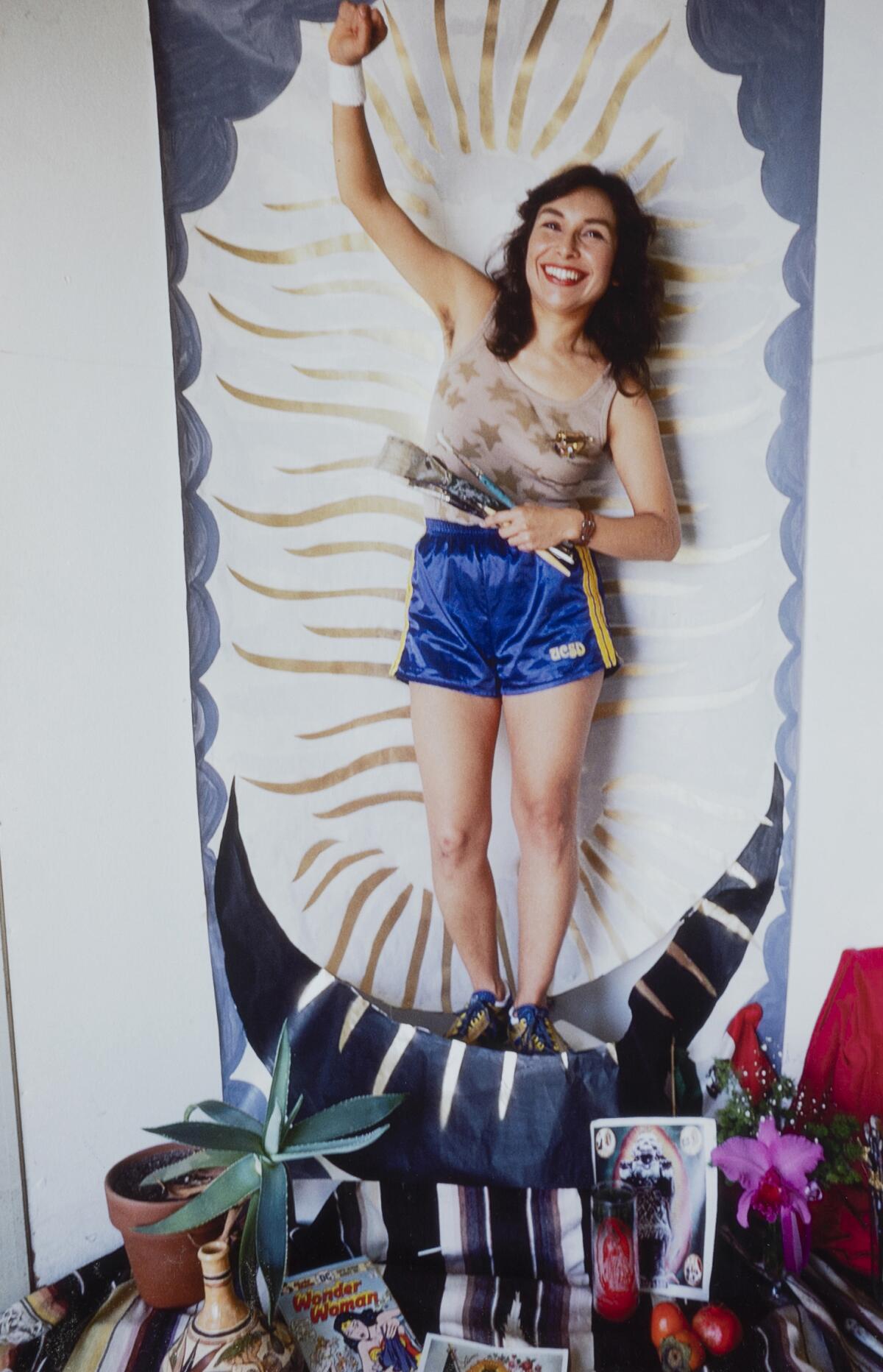
The show is small — occupying one of the galleries in MCASD’s downtown branch — and is focused primarily on two bodies of work from the 1970s.
The first is her “Guadalupe” series, in which the artist takes on one of Mexico’s most venerated cultural figures and gives her a feminist tweak. In a trio of large-scale paintings, López depicted her grandmother Victoria Franco sitting on the Virgin’s starred mantle, her mother Margaret Stewart sewing it, and the artist herself clutching it as she jogs — as if it were a runner’s thermal blanket or a superhero cape.
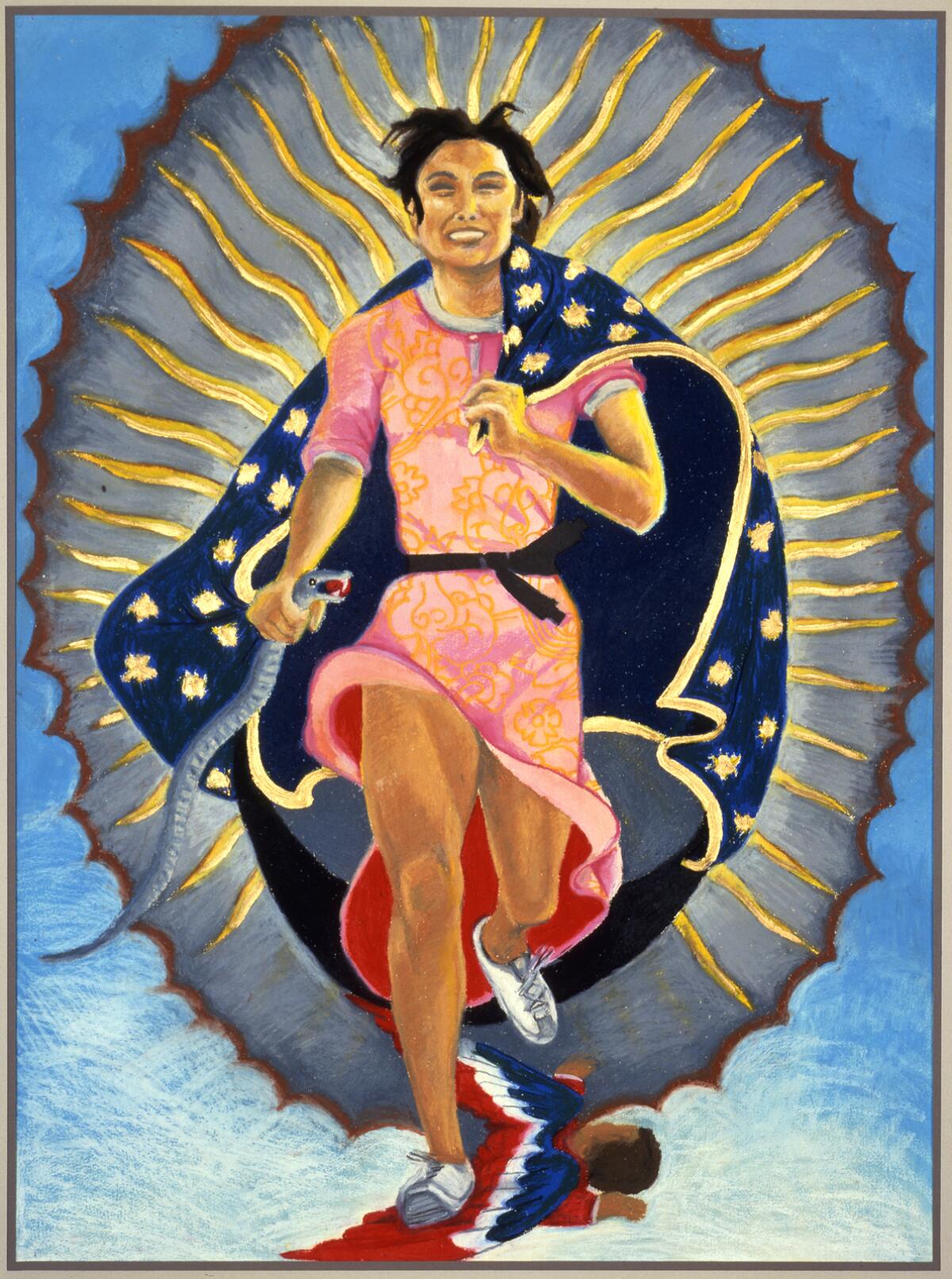
The Virgin of Guadalupe couldn’t be a more complex icon to tackle. She was a tool of Catholic colonial proselytizing, intended to help convert the Indigenous masses to Christianity. Frequently rendered in painting with brown skin, her creation myth involves an apparition in 1531 to an Indigenous man named Juan Diego (original name: Cuauhtlatoatzin). But the Virgin is also a syncretic figure, one who embodies Indigenous belief in female Aztec deities variously known as Tonantzin or Coatlicue. She is also indicative of the impossible gender standards to which women in Catholic society are expected to aspire: virginal, pure, maternal.
It was daring for López to reimagine this figure — turning a myth into womanly flesh. And it was not without controversy. The artist received death threats; strangers vandalized her work.
I was particularly moved by the myriad small-scale studies the artist created as part of the project, showing the Virgin reimagined as Aztec deities, everyday women and even Botticelli’s Venus.
Make the most of L.A.
Get our guide to events and happenings in the SoCal arts scene. In your inbox every Monday and Friday morning.
You may occasionally receive promotional content from the Los Angeles Times.
Also on view at MCASD are paintings the artist made when she was a student at UC San Diego. Part of a series called “A Dónde Vas, Chicana? Getting Through College” — more informally known as the “Runner” series — they show her running around campus, putting a Chicana female figure against the angular geometries of the university’s modernist buildings.
The figure she cuts is strong, joyful, athletic. Her legs are muscular, her gaze determined. This is no passive muse. López has power. So much that it took the art world decades to catch up to her.
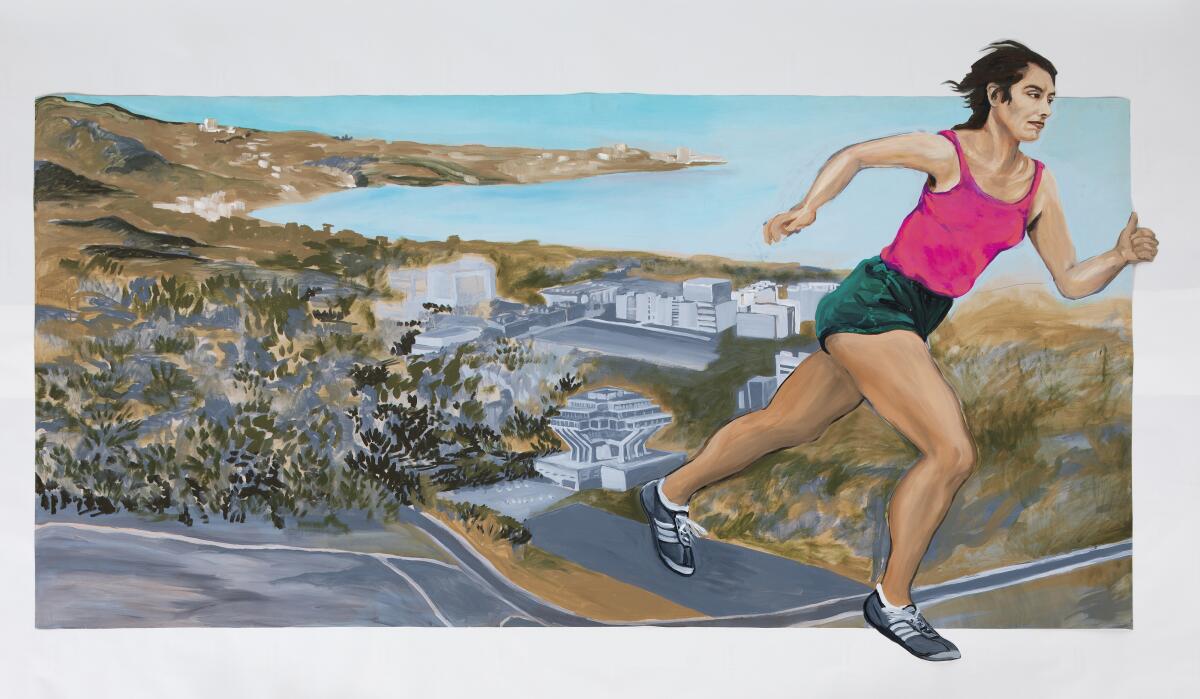
“Yolanda López: Portrait of the Artist” is on view at the Museum of Contemporary Art San Diego’s downtown branch through April 24; MCASD.org.
On and off the stage
“A folksy firebrand feminist once sat at the helm of the Lone Star State, and Holland Taylor is determined that we won’t forget it,” writes Times culture columnist Mary McNamara about “Ann,” Taylor’s one-woman show about former Texas Gov. Ann Richards. Directed by Benjamin Endsley Klein in a staging at the Pasadena Playhouse, Taylor, writes McNamara, “doesn’t play Richards so much as she channels her.”

At the Kirk Douglas Theatre, Jon Robin Baitz’s “I’ll Be Seein’ Ya” has landed and theater critic Charles McNulty reports that it could have used “a few more workshops.” The play centers on Alice Murchow (played by Christine Lahti), a strung-out antihero who bemoans the Hollywood career she never had as calamity descends on the outside world. “This ersatz character study,” writes McNulty, “starts sounding like an earnest grant proposal when contemporary political issues are raised.”
“Bhangin’ It: A Bangin’ New Musical,” which just premiered at the La Jolla Playhouse, showcases multiple styles of Indian dance in a narrative set amid intercollegiate bhangra competitions. Written by playwrights Rehana Lew Mirza and Mike Lew, the show, reports The Times’ Ashley Lee, took great care with the ways not only in which Indian culture was portrayed but also with how it was produced. “Coming back to work after the shutdowns, there’s a different level of expectation of how we’re going to approach theatermaking differently,” says Ari Afsar, who plays Mary in the musical, “and this company took that very seriously.”
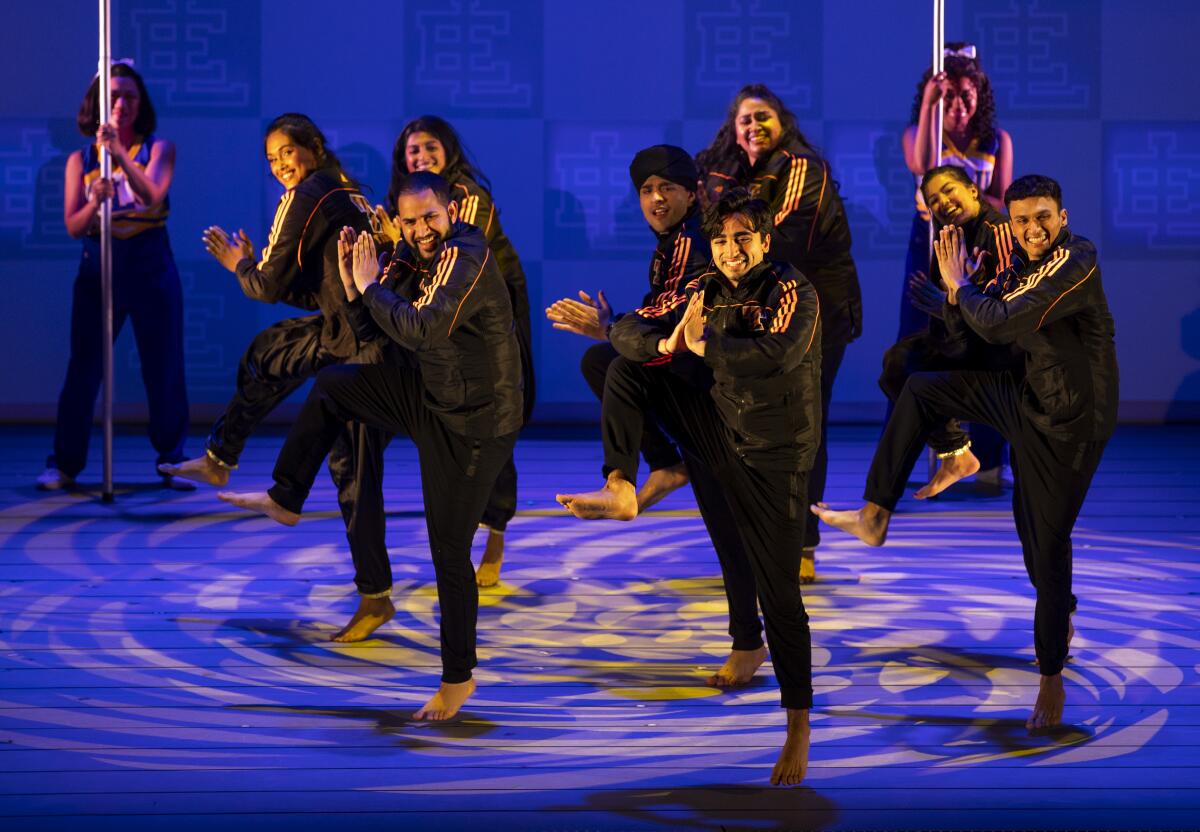
Deaf West Theatre recently announced plans to develop the Oscar-winning “CODA” into a stage musical. And Deaf West’s artistic director, DJ Kurs, can imagine the film’s actors, like Troy Kotsur, who won the Academy Award for supporting actor for his role as fisherman Frank Rossi, reprising the role on stage. “Yes, please!” he tells my colleague Jessica Gelt via email. “He’s been in four musicals, and he brings so much life to the stage.”
Closed for two years by the pandemic, the Actors’ Gang is back with Dario Fo’s “Can’t Pay? Don’t Pay!” — the work that was on view when COVID-19 put the kibosh on live theater. And after two years of watching theater on a small screen, writes contributor Margaret Gray, it’s a shift to see theater that bears the Gang’s stylized, mannered imprint. For Tim Robbins, the theater’s artistic director, the production is also a return of sorts: “Dario’s kind of the ground zero of inspiration for me wanting to write and create theater.”
Classical notes
Simon Rattle led the London Symphony Orchestra in one of the annual community concerts staged by the Music Academy of the West in Santa Barbara last week. And Times classical music critic Mark Swed says that it was “a joyous, stupendous community event in a real concert hall celebrating the 75th anniversary of the Music Academy.” The orchestra was joined by a band of young alumni for a program that included Percy Grainger’s “goofy brilliant ‘Lincolnshire Posy’” and a “patience-demanding Bruckner symphony.”
Enjoying this newsletter? Consider subscribing to the Los Angeles Times
Your support helps us deliver the news that matters most. Become a subscriber.
Swed also checked out a performance by the L.A. Phil at Disney Hall. On the docket was Mahler’s Seventh Symphony, the composer’s “most enigmatic, least-played symphony,” led by American conductor David Robertson. The music and the performance, writes Swed, seemed a “visceral acknowledgment of war and its implications.” Robertson brought to “Mahler’s funereal marches, eerie night music and decaying Viennese waltzes a shocking end-of-history fervor.”
Visual arts
“When people would ask me, ‘What do you shoot?’ I used to say ‘everything,’” L.A.-based artist Adam Davis tells contributor Evangeline Barrosse. “But now, I just tell them: ‘Black people.’” Davis’ portraiture consists of elegant tintype works that he repurposes as playing cards. These appeared last fall in a show titled “Black Magic” at the Byrd Museum in Mid-City and will now be at the heart of a tour that will make stops in Cleveland, Detroit, Chicago and Tulsa. Expect tintype portrait sessions at each stop.

Times art critic Christopher Knight reviews the group-curated show “Lifes” at the Hammer Museum, organized by Aram Moshayedi and Nicholas Barlow. They began with four texts by authors Fahim Amir, Asher Hartman, Rindon Johnson and Adania Shibli, and then engaged other artists until they had about 50 collaborators. This led them to an installation that features a mix of physical objects, kinetic works and programmatic elements that come to life once an hour. The show, writes Knight, is “commendable” for the institutional risks it takes but ultimately “doesn’t pan out.”
Sort of related: In that piece, Knight refers to the Ulysses Jenkins show at the Hammer, an exhibition “which sets off sparks.” Well, there’s a good interview with co-curator Erin Christovale about the show on the Modern Art Notes podcast.
My colleague Deborah Vankin, in the meantime, dared to set a toe in the new “Immersive Frida Kahlo” experience, where she gives us all the dish on the on-site yoga (weird), the lounge area with “custom artworks designed by the show’s creative director” (weirder) and the pineapple margarita (okaaaayyyyy). Was that Frida saying “no mames” from beyond the grave? Yes. Yes it was.
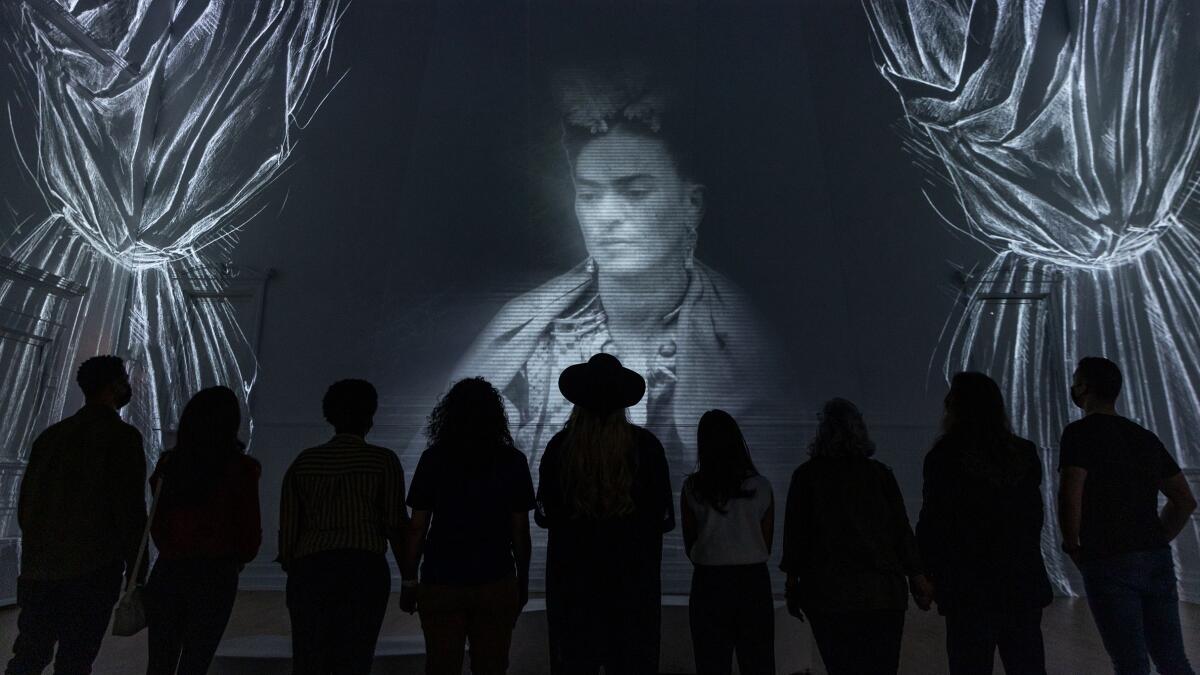
Art, war and the internet
As Russia’s invasion of Ukraine extends into its sixth week, Generation X has been dipping into the culture of the late Cold War and recycling it on social media platforms such as TikTok. As I note in my column this week, bomb drills, “Red Dawn” and German-synth pop hits about annihilation have all become grist for the meme mill. That school desk? It’s not a desk. It’s a Gen X bomb shelter.
Sort of related: Mother Jones editor Clara Jeffery has an epic Cold War ’80s playlist.

My colleague Kate Linthicum looks at another aspect of social media: namely, how the war in Ukraine is playing out live on various platforms: “They offer a quick-pulse stream of consciousness in a morality play where ancient brutality meets raw, digitized immediacy.”
For years, a small group of protesters in the U.S. called the Signerbusters has protested artists supportive of Vladimir Putin. Their message is now getting traction.
A dystopian Russian novel from 1986 predicted a leader like Putin.
Essential happenings
Matt Cooper has the six best culture picks for the weekend, which includes a gig by the Gay Men’s Chorus at Royce Hall and four performances of Mozart’s unfinished Mass by the L.A. Phil, led by conductor emeritus Zubin Mehta.
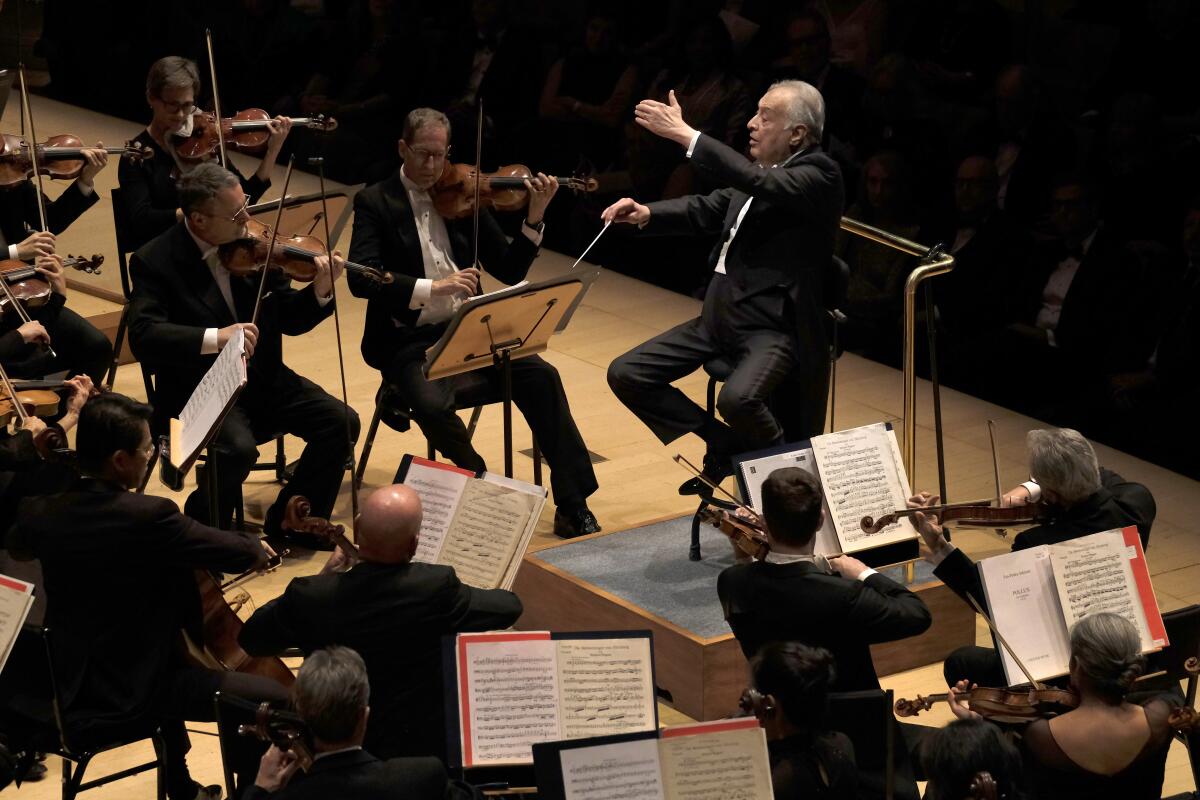
Cooper also rounds up all the museum shows to see in April, including a show about Buffalo Soldiers at the California African American Museum and reinstallation of MOCA’s permanent collection galleries in its Grand Avenue space.
“Adobe Punk,” a short musical currently playing at Plaza de la Raza imagines the intersecting lives of three young punk musicians in the early ’80s who are squatting in an abandoned house — a creaky historic adobe that has its own stories to tell. The show was co-created by Theresa Chavez and Gabriel Garza and features original music written by Chavez and musician Nina Diaz, with musical direction by Sage Lewis. This is a new play, and the characters are in need of definition and the dialogue, refining. But I was intrigued by the intersecting narratives of architecture, L.A. history and punk. The smart staging — the show was directed by Chavez, with set design by Dorothy Hoover — gives “Adobe Punk” an added dimension. On view through April 3.
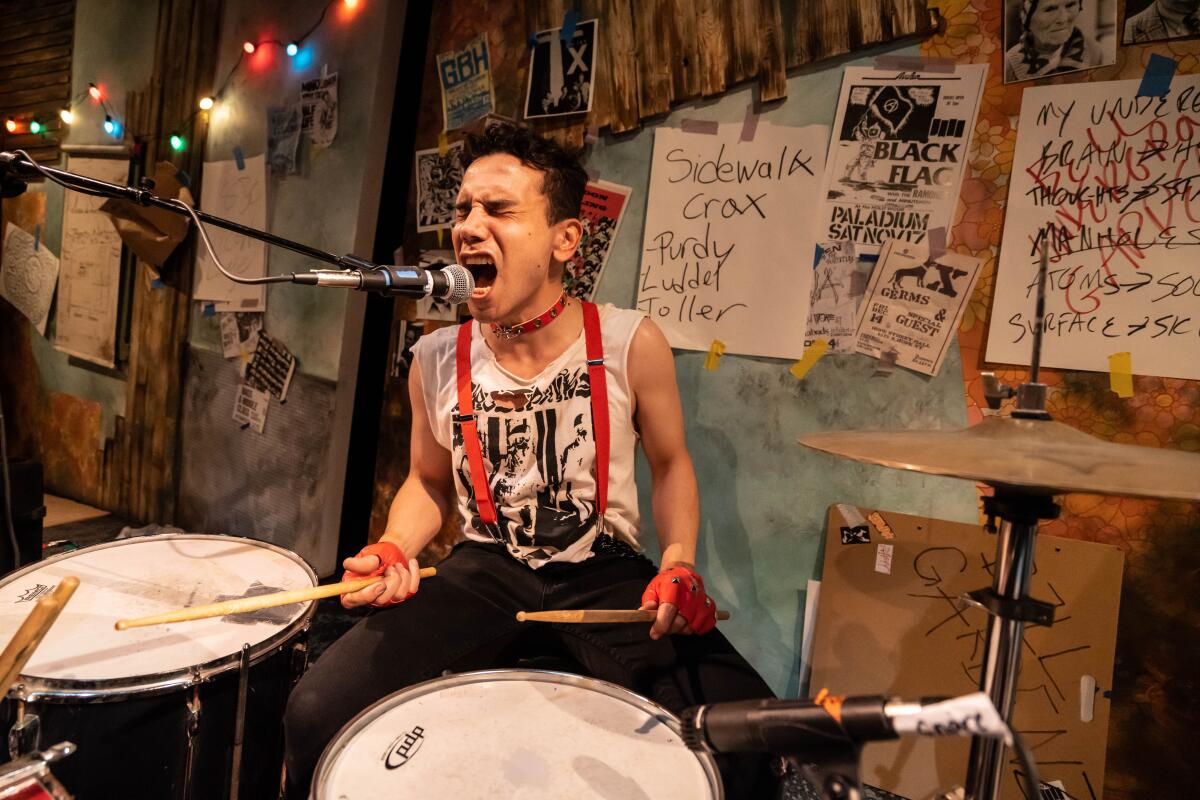
Moves
James Florio, whose photographs link landscape and architecture, has been named the recipient of the Excellence in Photography Award by Woodbury University’s Julius Shulman Institute.
Karen Hofmann has been named the new president and chief executive of ArtCenter College of Design, the first woman to take on the role in the college’s history. She will assume the post on July 1.
Chicago has an architecture critic again: Critic Lee Bey will have a monthly column in the Chicago Sun-Times starting in April.
Passages
Anne Parsons, who shepherded the Detroit Symphony Orchestra for about two decades as its president and CEO, has died at 64.
Christopher Alexander, a Viennese-born architect and theorist who was a fierce anti-Modernist, and whose writings helped give rise to the principles of New Urbanism, is dead at 85.
In other news
— Two administrators at SCI-Arc have been placed on administrative leave after students and former alumni alleged poor working conditions in their design studios, as well as possible abuses of power. In a statement announcing the suspensions, SCI-Arc director Hernán Díaz Alonso said that the school would retain an independent investigator to look into the allegations.
— L.A.’s asphalt-covered schoolyards are an environmental injustice.
— Shealah Craighead, a White House photographer during the Trump administration had plans to publish a book of her images. Trump had other ideas.
— How the work of dancer Storyboard P points to a “missing lane” in American dance.
— The Baltimore Museum of Art has a new show titled “Guarding the Art” curated by 17 members of its security team.
— M.H. Miller examines the archetype of the troubled artist-addict.
— The Chinese Peruvian restaurant Chifa in Eagle Rock is serving candy jewelry that looks like jade.
— Because I was born in Wyoming, I am here for any and all stories about jackalopes.
And last but not least ...
This slaps.
The biggest entertainment stories
Get our big stories about Hollywood, film, television, music, arts, culture and more right in your inbox as soon as they publish.
You may occasionally receive promotional content from the Los Angeles Times.




